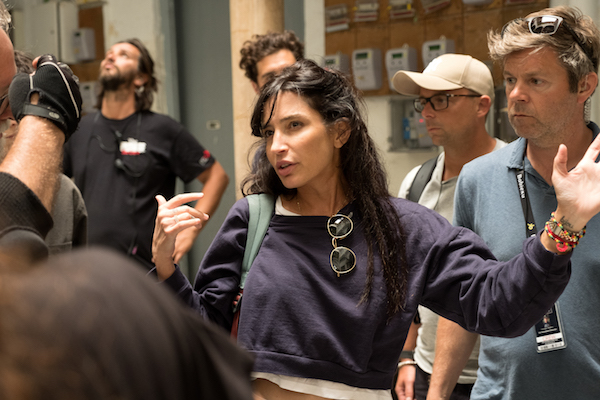
Star of a series of novels by Mark Burnell, Stephanie Patrick is a drug-addicted prostitute in Britain who transforms herself into an international assassin to avenge her family, victims of a terrorist bomb. In The Rhythm Section, she’s forced to confront her doubts and anxieties in life-and-death situations.
As played by Blake Lively, Stephanie’s more of a “real” person than the usual professional killers found in movies. She’s a bad driver, mishandles her weapons, forgets her training, and is overmatched in hand-to-hand combat. Crucially, she’s not prepared to kill, making her a less-than-ideal agent when she is recruited to take out a terrorist ring.
An encounter with a journalist gives Stephanie the chance to seek revenge on Reza (Tawfeek Barhom), the terrorist who planted the bomb on her family’s plane. But her initial steps backfire badly, sending Reza into hiding. A [fortuitous and not especially believable] clue sends her to the Scottish Highlands, where former spy Ian Boyd (Jude Law) agrees to mentor her.

A long training sequence later, Stephanie assumes the identity of notorious assassin Petra Reuter and embarks on missions she hopes will bring her back to Reza. A car chase in Tangier goes spectacularly bad, Stephanie botches another assignment in New York City, and a contact in Madrid (Sterling K. Brown) may not be as trustworthy as he claims.
Assassins litter the cinematic landscape. Just recently Keanu Reeves’ John Wick, Ben Affleck’s The Accountant, George Clooney’s The American, with countless others leading back to Western gunslingers. Plenty of women too, from Anne Parillaud’s La Femme Nikita through Sasha Luss’s Anna and Charlize Theron’s Atomic Blonde. They are distinguished by style and temperament: Chow Yun Fat’s The Killer was kinetic but romantic, John Wick focused and determined, the Atomic Blonde phenomenally adept, Anna overwhelmed by Luc Besson’s Eurocentric proclivities.

Clooney and Affleck made peculiarly gloomy, downbeat killers, and unfortunately that’s how Reed Morano (who directed episodes of The Handmaid’s Tale) decided to paint Lively’s character here. It’s “realistic” that Stephanie gets knocked around and second-guesses herself, but it’s not much fun to watch her make the same basic mistakes over and over. Psychologically it makes sense that Stephanie has trouble hurting, let alone killing, her opponents. Until, of course, she doesn’t, erasing the film’s claims to moral authority.
Lively is committed to her role and is plausible enough as a troubled, unsure woman. The film downplays her glamor a bit too strenuously, which may not have been the best strategy given that this is an Eon Productions project from James Bond producers Barbara Broccoli and Michael G. Wilson. The Rhythm Section has an extremely plush production design (by Tim Conroy), and cinematographer Sean Bobbitt’s visuals gleam with expense. The result is a kind of assassin chic where even minor agents live in Architectural Digest-worthy digs.
That “rhythm section” refers to the heart (the “drums”) and breath (the “bass”), as we are reminded three times during the movie. It’s not a very helpful metaphor, but at least it’s not as on-the-nose as the soundtrack, which uses pop chestnuts like “I’m Sorry” and “In the Pines” to corny effect. You want a female killer movie? This will do well enough, as long as you’re not looking for excitement and humor as well.


